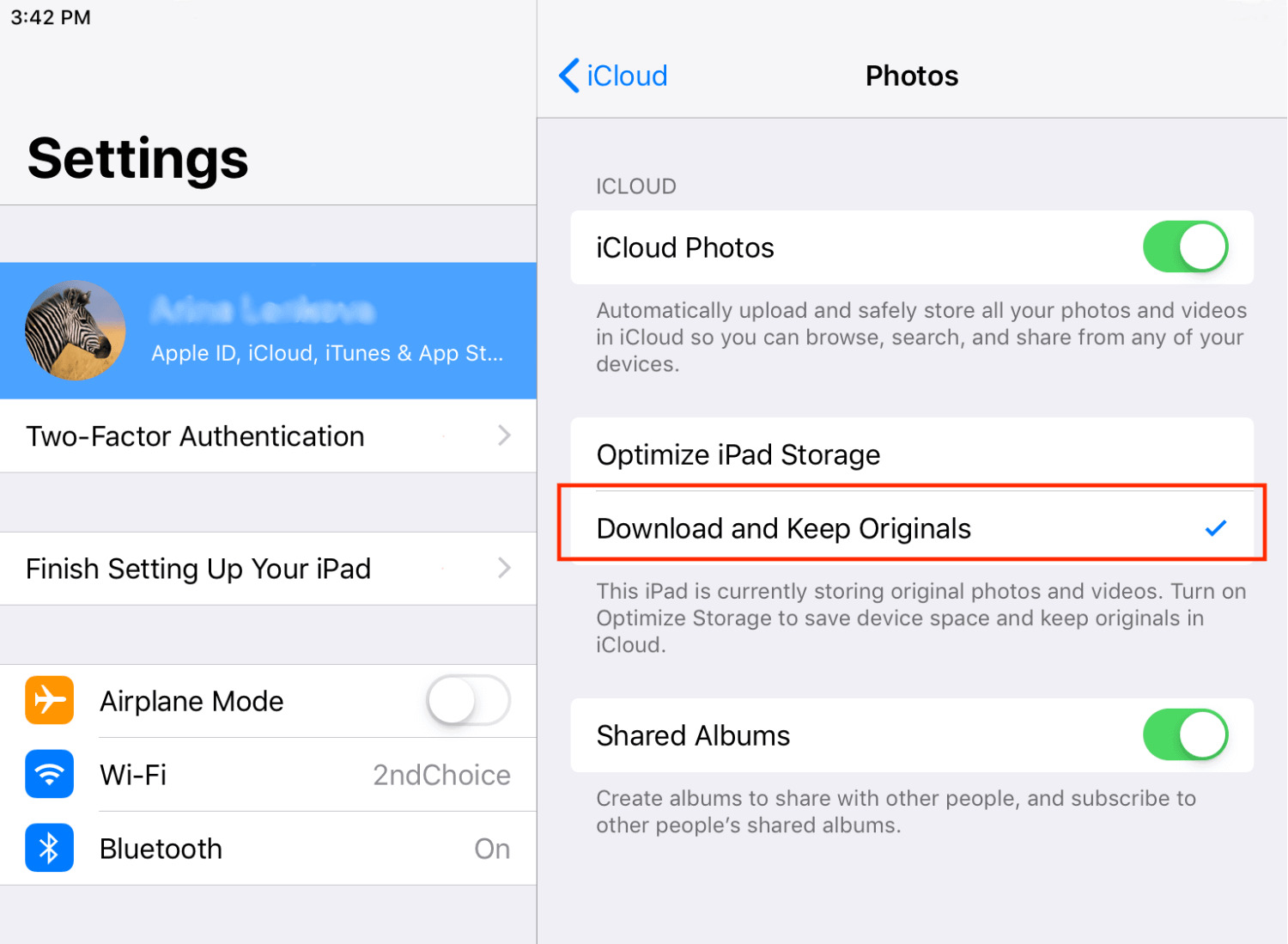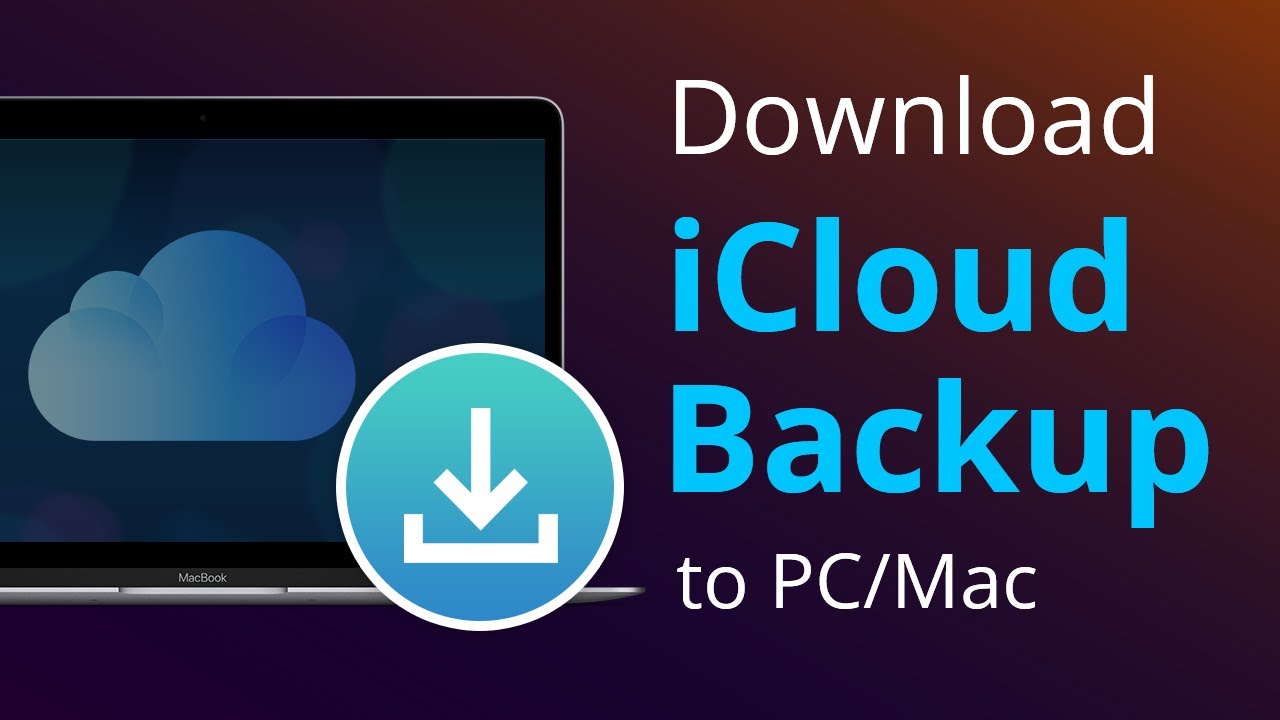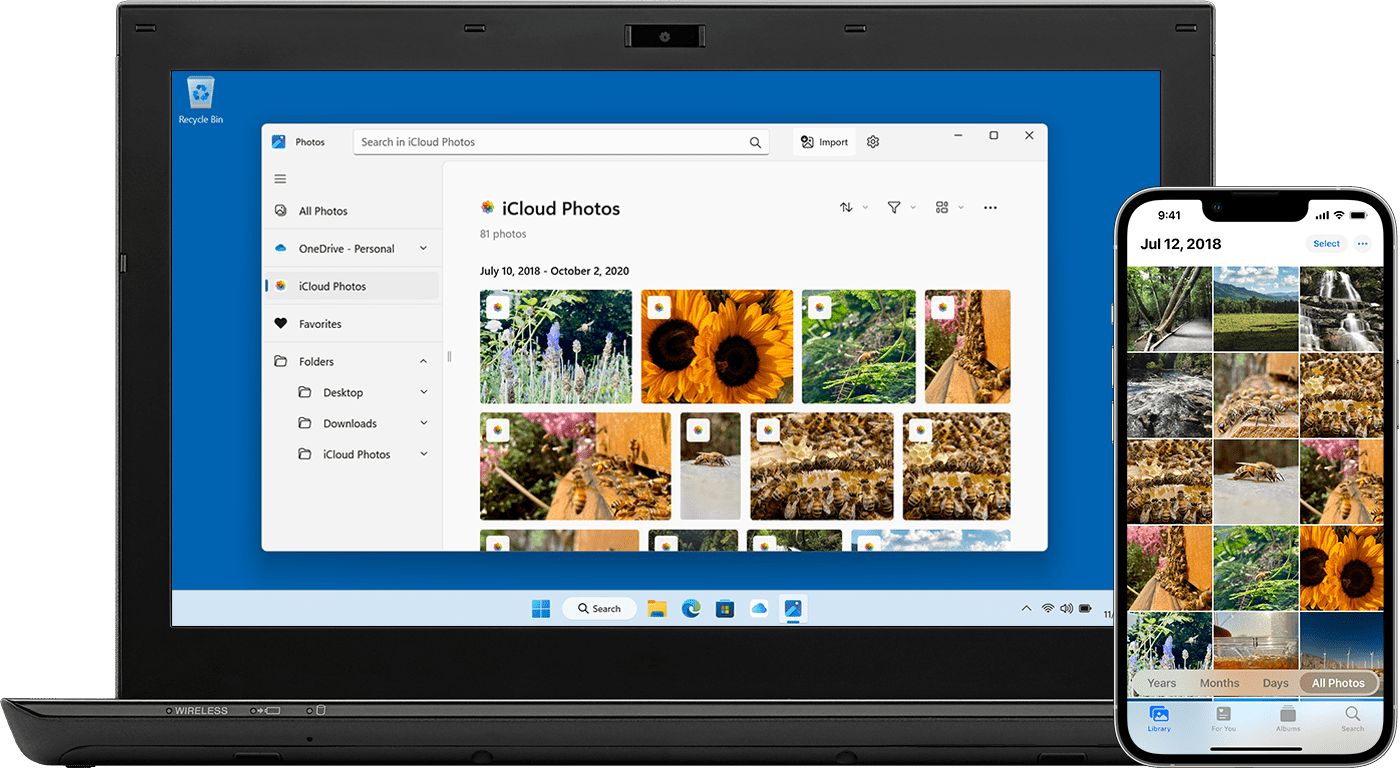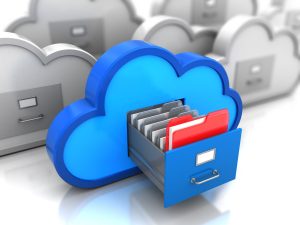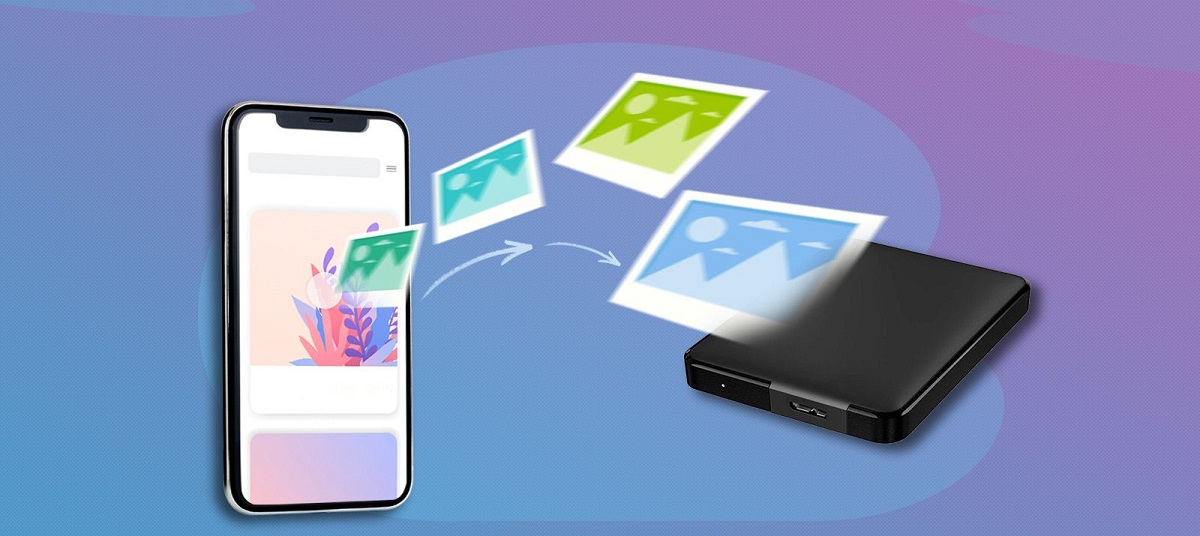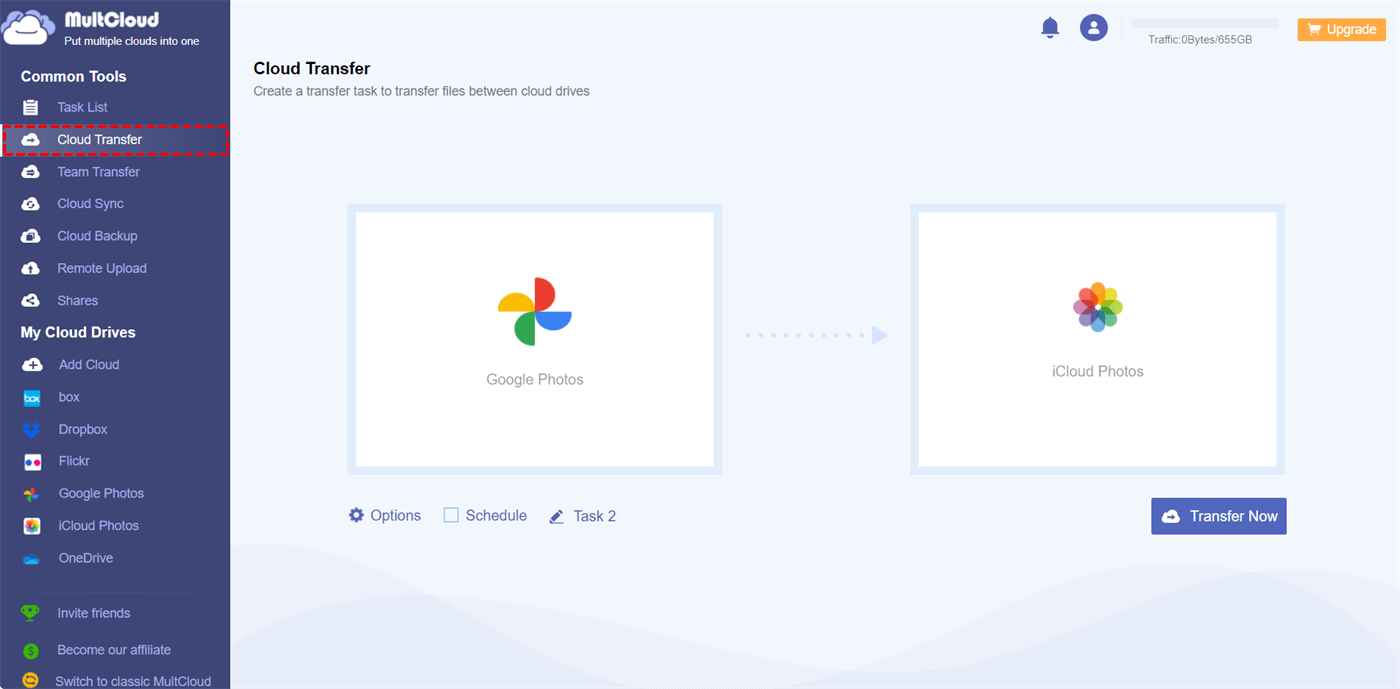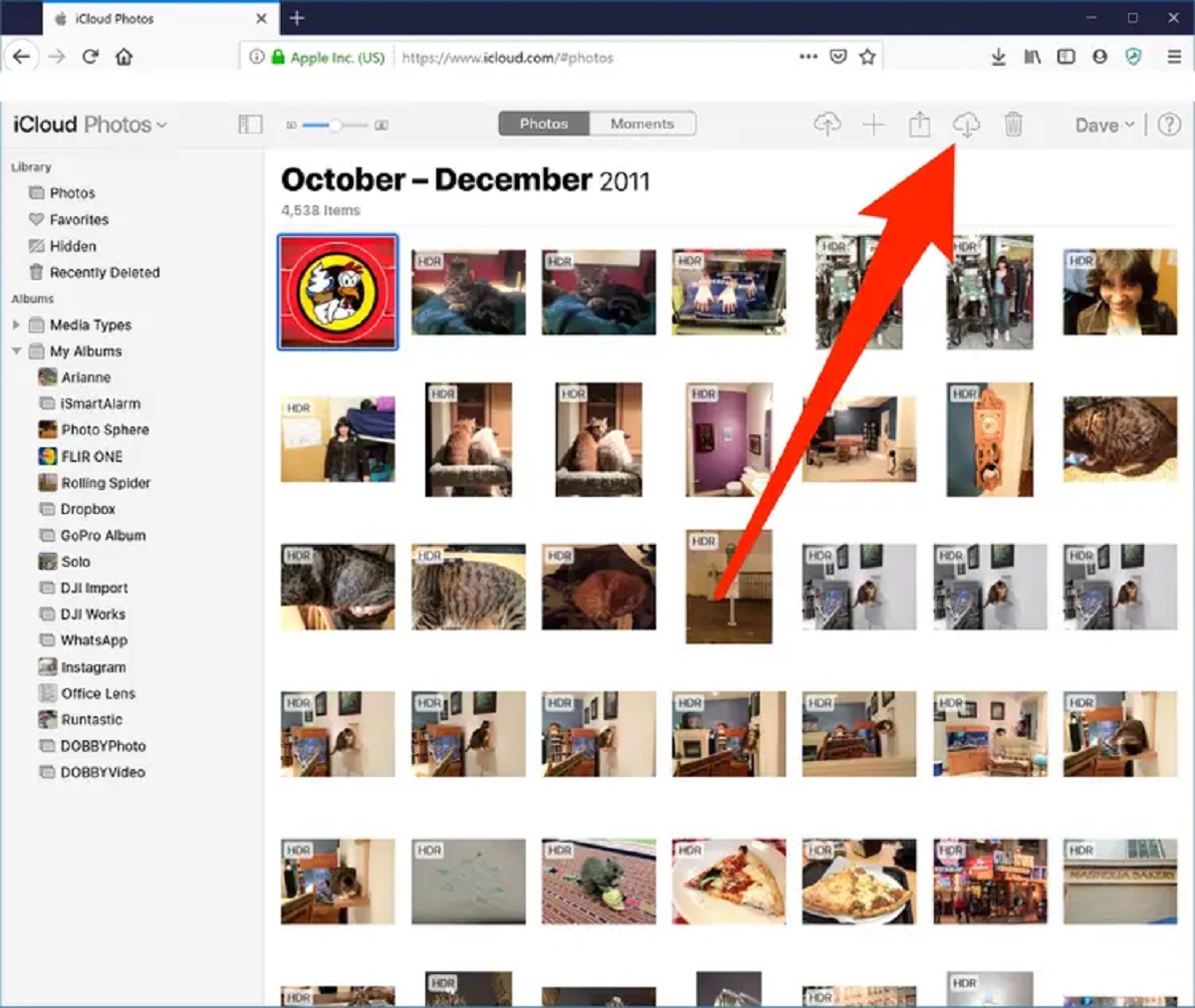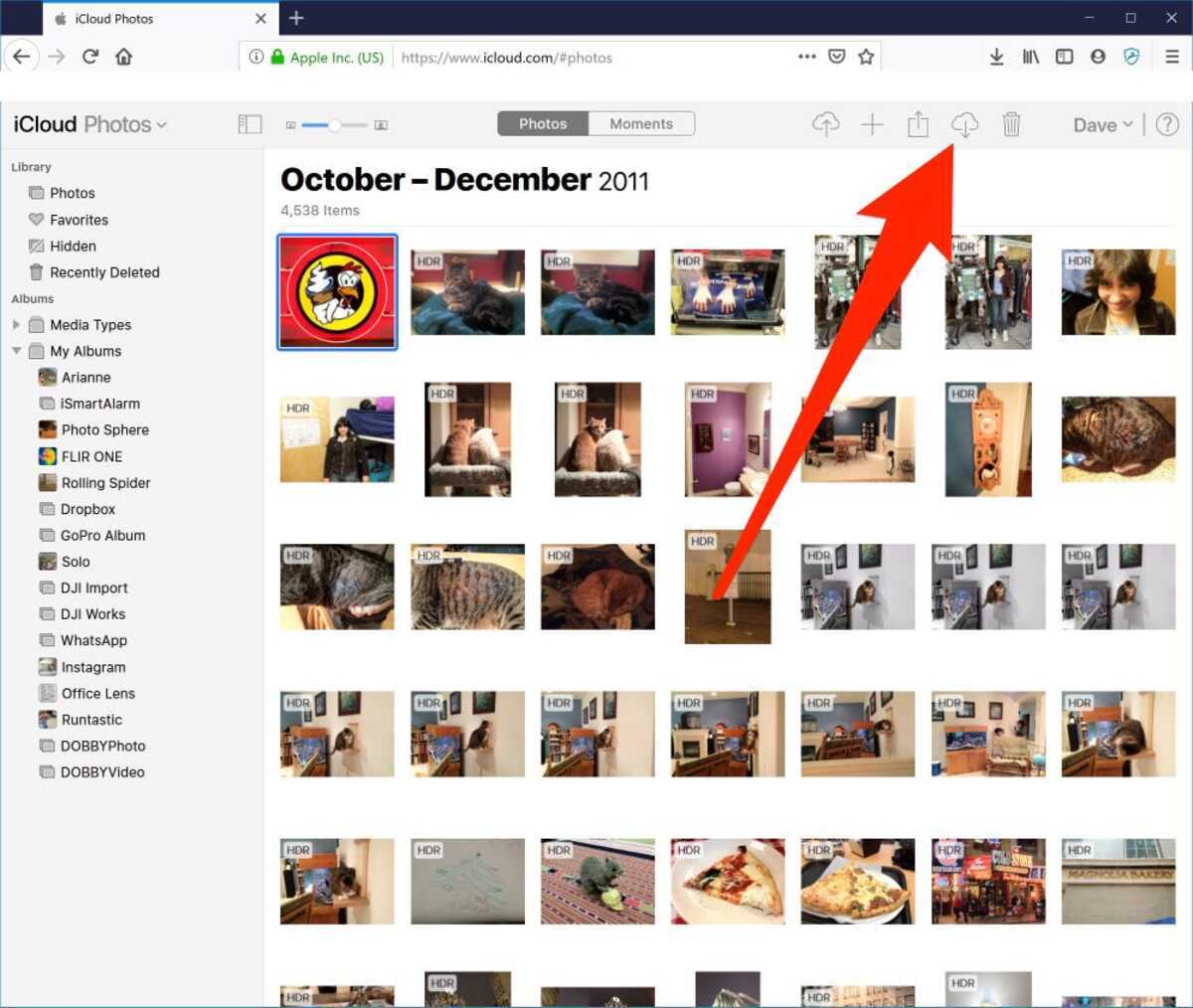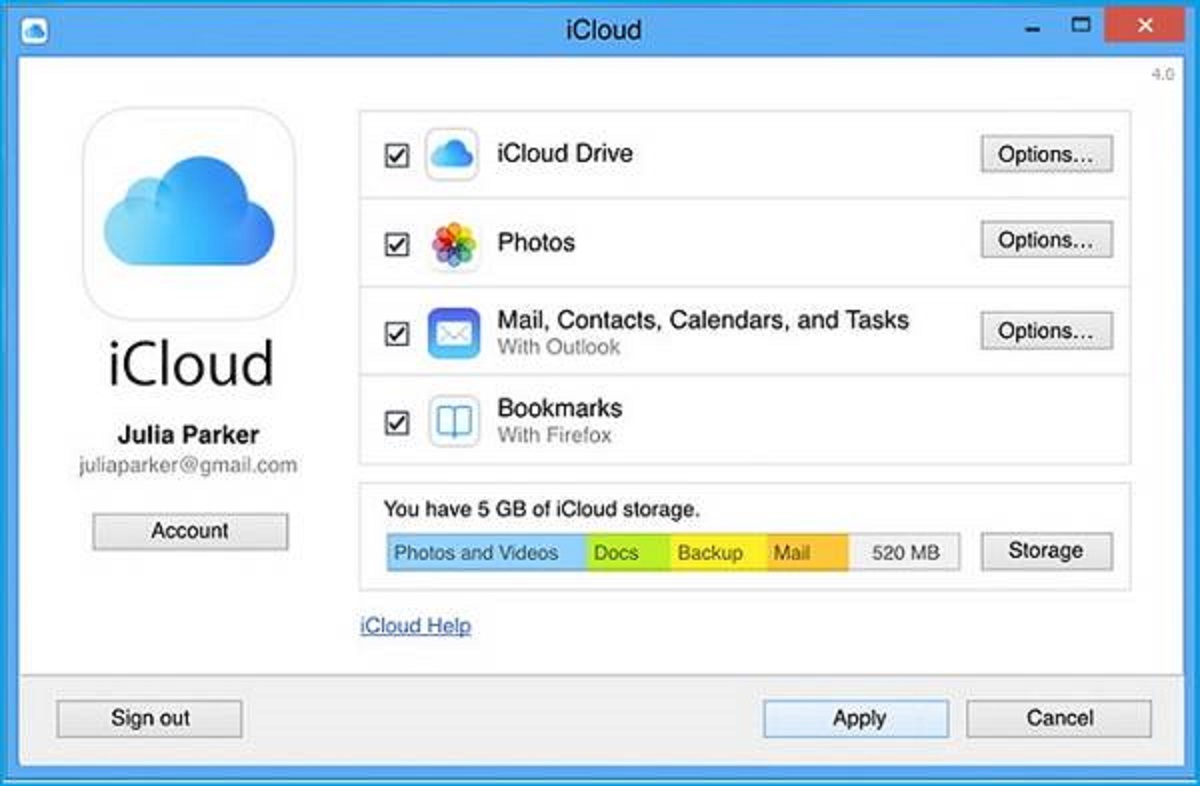Introduction
Having access to our photos and videos across multiple devices is more convenient than ever thanks to iCloud Photos. However, slow download speeds can be frustrating, especially when you’re eager to view or share those precious memories. If you’ve been experiencing sluggish download times with iCloud Photos, don’t worry – there are several steps you can take to make the process faster and more efficient.
In this article, we’ll explore some practical tips and tricks to speed up the download of your iCloud photos. Whether you’re using an iPhone, iPad, or Mac, these techniques can help optimize your device and enhance your overall iCloud experience.
Before diving into the solutions, it’s essential to ensure that you have a stable and reliable internet connection. Slow download speeds can sometimes be attributed to poor network connectivity. Additionally, make sure you’re running the latest version of iOS or macOS, as software updates often contain bug fixes and improvements that can enhance performance.
So, if you’re ready to regain control over your iCloud photos and accelerate the download process, let’s explore the steps you can take to make iCloud Photos download faster.
Check Internet Connection
Before troubleshooting any other potential issues, it’s important to ensure that your internet connection is stable. Slow download speeds can often be attributed to a weak or unreliable network connection. Here’s what you can do to check and improve your internet connection:
- Move closer to your Wi-Fi router: If you’re using Wi-Fi, getting closer to the router can help improve the signal strength. Walls and other objects can interfere with the Wi-Fi signal, so minimizing the distance between your device and the router can make a significant difference.
- Reset your router: Sometimes, a simple router reset can resolve connectivity issues. Unplug the power cable from your router, wait for a few seconds, and then plug it back in. Give the router a few minutes to restart, and then try downloading your iCloud photos again.
- Switch to a different network: If possible, try downloading your iCloud photos on a different network to determine if the issue is specific to your current internet connection. You can try using a different Wi-Fi network, or switch to cellular data if you’re using a mobile device.
- Test your internet speed: Use a reliable speed test tool or app to check the speed of your internet connection. If the download and upload speeds are significantly lower than what you’re paying for, you may need to contact your internet service provider for assistance.
By ensuring a strong and stable internet connection, you can eliminate network-related issues that may be causing slow download speeds for your iCloud photos. If the issue persists after confirming a stable connection, continue reading to explore additional steps to speed up iCloud Photos downloads.
Restart Device
Often, a simple restart can work wonders in resolving various software-related issues, including slow iCloud Photos downloads. Restarting your device can refresh its system, clear temporary files, and improve overall performance. Here’s how you can restart your device:
- For iPhone or iPad: Press and hold the power button until the “Slide to power off” slider appears. Drag the slider to turn off your device. Once it is fully powered off, press and hold the power button again until the Apple logo appears to turn it back on.
- For Mac: Click on the “Apple” menu and select “Restart” from the dropdown. Alternatively, you can press and hold the power button until the options appear, then select “Restart.”
After the device restarts, try to download your iCloud photos again and see if the speed has improved. In some cases, a simple restart can resolve temporary software glitches that may be affecting the download speed.
If restarting the device didn’t improve the download speed, don’t worry. There are still other troubleshooting steps to explore. Continue reading to learn more about optimizing your device for faster iCloud Photos downloads.
Update iOS
Keeping your iOS device up to date with the latest software version is crucial for optimal performance and compatibility with iCloud services. Apple regularly releases iOS updates that include bug fixes, performance enhancements, and new features. Updating your device’s operating system can help resolve any potential issues affecting the download speed of your iCloud photos. Here’s how you can check for and install iOS updates:
- Connect your iOS device to a stable Wi-Fi network.
- Go to the “Settings” app on your device and tap on “General.”
- Select “Software Update.”
- If an update is available, tap on “Download and Install.”
- Follow the on-screen instructions to complete the update.
It’s important to note that iOS updates can be quite large and may take some time to download and install. It is advisable to have your device connected to a power source to ensure that the update is not interrupted. Additionally, make sure you have enough free space on your device to accommodate the update.
Once the update is installed, restart your device and try downloading your iCloud photos again. The new software version may have resolved any underlying issues that were causing slow download speeds.
If your device is already running the latest iOS version, or if updating the software didn’t improve the download speed, continue reading for more tips to enhance iCloud Photos downloads.
Enable Optimize Storage
iCloud offers a useful feature called “Optimize Storage” that can help manage the storage space on your device effectively. By enabling this feature, your device will automatically store optimized versions of your photos and videos, reducing their file size without compromising quality. This can significantly speed up the downloading process for iCloud Photos. Here’s how you can enable Optimize Storage:
- On your iPhone or iPad, go to the “Settings” app.
- Tap on your name at the top of the screen, then select “iCloud.”
- Tap on “Photos.”
- Toggle on the “Optimize iPhone Storage” option.
If you’re using a Mac, follow these steps to enable Optimize Storage:
- Open the “Apple” menu and click on “System Preferences.”
- Click on “Apple ID” and select the “iCloud” tab.
- Check the box next to “Optimize Mac Storage.”
Enabling Optimize Storage ensures that only the most recent and frequently accessed photos and videos are stored locally on your device. Older and less frequently accessed content is kept in iCloud, making more storage space available on your device. This can result in faster download speeds for iCloud Photos, as the optimized versions of the photos are smaller in size.
Keep in mind that the original, high-resolution versions of your photos and videos are still safely stored in iCloud and can be downloaded onto your device anytime you need them.
If enabling Optimize Storage doesn’t improve the download speed, there are more steps you can take to further enhance your iCloud Photos experience. Continue reading to explore additional troubleshooting techniques.
Pause Other Downloads
If you have multiple downloads or updates happening simultaneously on your device, it can impact the download speed of your iCloud photos. Pausing or prioritizing your downloads can help allocate more bandwidth to the iCloud Photos download and boost its speed. Here’s what you can do:
- On your iPhone or iPad, swipe down from the top-right corner of the screen (on iPhone X or later models) or swipe up from the bottom of the screen (on earlier iPhone models) to access the Control Center.
- Long-press on the download or update indicator at the top-right corner of the Control Center.
- Tap on the pause button next to the iCloud Photos download or any other download you want to pause.
On a Mac, follow these steps to pause or prioritize downloads:
- In the Dock, click on the “Launchpad” icon.
- Click on the “Downloads” folder, which is usually located at the bottom of the screen.
- Control-click on the item you want to pause or prioritize, and select “Pause” or “Prioritize Download” from the context menu.
By pausing other downloads temporarily, you can allocate more bandwidth and resources to the iCloud Photos download, improving its speed. Once the iCloud Photos download is complete, you can resume or prioritize other downloads as needed.
If pausing other downloads didn’t have a noticeable impact on the download speed, there are more troubleshooting steps to explore. Continue reading to optimize your device and enhance iCloud Photos downloads.
Reset Network Settings
Issues with network settings can sometimes cause slow download speeds for iCloud Photos. Resetting your network settings can help resolve any network-related issues and restore your device’s connection to the internet. Here’s how you can reset network settings:
- On your iPhone or iPad, go to the “Settings” app.
- Tap on “General.”
- Scroll down and select “Reset.”
- Tap on “Reset Network Settings.”
Resetting network settings will erase all saved Wi-Fi networks, passwords, and VPN settings on your device. You will need to re-enter the Wi-Fi passwords to connect to networks again.
If you’re using a Mac, follow these steps to reset network settings:
- Click on the “Apple” menu and select “System Preferences.”
- Click on “Network.”
- In the left panel, select the network connection that you’re using.
- Click on the “-” button at the bottom to remove the connection.
- Click on the “+” button to add a new connection, and follow the prompts to set up the network again.
Resetting network settings can fix any misconfigured network settings or conflicts that were affecting the download speed of your iCloud photos. After resetting the network settings, try downloading your iCloud photos again and see if the speed has improved.
If resetting network settings didn’t resolve the issue, don’t worry. There are still more troubleshooting techniques to explore. Continue reading for additional tips to speed up iCloud Photos downloads.
Check iCloud Storage
Running out of iCloud storage space can affect the download speed of your iCloud photos. If your iCloud storage is nearing its limit or is completely full, it’s important to free up space or upgrade your storage plan. Here’s how you can check your iCloud storage:
- On your iPhone or iPad, go to the “Settings” app.
- Tap on your name at the top of the screen, then select “iCloud.”
- Tap on “Manage Storage.”
On a Mac, follow these steps to check your iCloud storage:
- Click on the “Apple” menu and select “System Preferences.”
- Click on “Apple ID” and select the “iCloud” tab.
- Click on “Manage…” next to “iCloud Storage.”
Once you’ve accessed the iCloud storage management page, you can see how much storage space is being used by different apps and data. If you find that your iCloud storage is nearly full, consider taking the following steps:
- Delete unnecessary files and old backups: Review the list of apps and data using iCloud storage and delete any files or backups that are no longer needed.
- Optimize photo storage: Enable the “Optimize iPhone Storage” option, as mentioned in a previous section, to store smaller versions of your photos in iCloud, freeing up device storage.
- Upgrade your iCloud storage plan: If you consistently run out of storage space, consider upgrading your iCloud storage plan to a higher capacity. This will give you more room to store your photos and other iCloud data.
By checking and managing your iCloud storage, you can ensure that you have enough free space for your iCloud photos to download quickly and efficiently.
If resolving the iCloud storage issue didn’t improve the download speed, there are a few more troubleshooting steps to explore. Continue reading for additional tips to enhance your iCloud Photos experience.
Disable Background App Refresh
Background App Refresh is a feature on iOS devices that allows apps to update in the background, even when they are not actively in use. While this feature can be useful for keeping apps up to date, it can also consume valuable network resources, potentially affecting the download speed of your iCloud photos. Disabling Background App Refresh for specific apps can help improve the performance of iCloud Photos downloads. Here’s how to disable it:
- On your iPhone or iPad, go to the “Settings” app.
- Tap on “General.”
- Select “Background App Refresh.”
- You can either disable it entirely by toggling off “Background App Refresh,” or you can choose to disable it for specific apps by scrolling through the list and toggling off the ones you want to prevent from refreshing in the background.
By disabling Background App Refresh, you are preventing these apps from utilizing network resources in the background, allowing more bandwidth to be allocated to the download of your iCloud photos.
It’s worth noting that disabling Background App Refresh may limit the ability of certain apps to update in the background. However, it shouldn’t affect their functionality when actively used. You can always re-enable Background App Refresh or adjust it for specific apps if needed.
If disabling Background App Refresh didn’t significantly improve the download speed of your iCloud photos, don’t worry. There are still a few more steps you can take to optimize your device and enhance iCloud Photos downloads. Keep reading for additional troubleshooting techniques.
Use Wi-Fi Instead of Cellular Data
When it comes to downloading large files like iCloud photos, using Wi-Fi instead of cellular data can make a significant difference in download speed. Wi-Fi networks typically offer faster and more stable connections, especially when compared to cellular data networks. Here’s how you can ensure you’re connected to Wi-Fi for downloading your iCloud photos:
- On your iPhone or iPad, go to the “Settings” app.
- Tap on “Wi-Fi.”
- Make sure Wi-Fi is toggled on, and then select a reliable Wi-Fi network from the available options.
By connecting to a Wi-Fi network, you can avoid potential limitations or slower speeds associated with cellular data plans. Furthermore, Wi-Fi networks typically offer larger data quotas or even unlimited data usage, which can be beneficial for downloading a large number of iCloud photos.
If you’re on a limited Wi-Fi connection, such as public Wi-Fi, ensure that you have enough data quota or that your session won’t expire in the middle of the download. Additionally, make sure you’re within range of the Wi-Fi router to maintain a strong signal throughout the download process.
By utilizing a Wi-Fi network instead of cellular data, you can take full advantage of its faster speeds and stability to improve the download speed of your iCloud photos.
If using Wi-Fi instead of cellular data didn’t significantly improve the download speed, there are still a few additional troubleshooting steps to explore. Continue reading for more tips to optimize your device and enhance iCloud Photos downloads.
Sign Out and Sign Back In to iCloud
If you’re still experiencing slow download speeds for your iCloud photos, signing out and then signing back in to iCloud can help resolve any potential authentication or syncing issues. This process refreshes your iCloud account settings and can fix any temporary glitches that may be affecting the download speed. Here’s how to sign out and sign back in:
- On your iPhone or iPad, go to the “Settings” app.
- Tap on your name at the top of the screen, then scroll down and select “Sign Out.”
- Enter your Apple ID and password to confirm the sign-out process.
- Once signed out, go to the “Settings” app again.
- Tap on “Sign In to your iPhone” (or “Sign in to iCloud” on older iOS versions).
- Enter your Apple ID and password to sign back in to iCloud.
- Follow the prompts to complete the sign-in process.
If you’re using a Mac, follow these steps to sign out and sign back in:
- Click on the “Apple” menu and select “System Preferences.”
- Click on “Apple ID” and select the “Overview” tab.
- Click on “Sign Out.”
- Enter your Apple ID and password to confirm the sign-out process.
- Once signed out, click on “Sign In” and enter your Apple ID and password to sign back in to iCloud.
- Follow the prompts to complete the sign-in process.
By signing out and signing back in to iCloud, you’re essentially refreshing the connection between your device and iCloud services. This can help resolve any potential issues and may improve the download speed of your iCloud photos.
If signing out and signing back in didn’t significantly improve the download speed, there are a few more troubleshooting steps to consider. Keep reading for additional tips to enhance your iCloud Photos experience.
Conclusion
Slow download speeds for iCloud Photos can be frustrating, but with the right troubleshooting steps, you can optimize your device and enhance the download speed. Start by checking your internet connection and ensuring that it is stable. Restarting your device can also resolve temporary software glitches. Updating your iOS or macOS to the latest version can bring performance improvements. Enabling the “Optimize Storage” feature can help manage space and speed up downloads.
When experiencing slow downloads, consider pausing other downloads, resetting network settings, and checking your iCloud storage to free up space. Disabling Background App Refresh and using Wi-Fi instead of cellular data can make a significant difference. Finally, signing out and signing back in to iCloud can refresh the connection.
Remember that optimizing download speeds for iCloud Photos may require a combination of these solutions. It’s important to be patient and try different methods until you find one that works best for your device and network conditions. By implementing these steps, you can ensure a faster and more efficient downloading experience for your iCloud photos.







